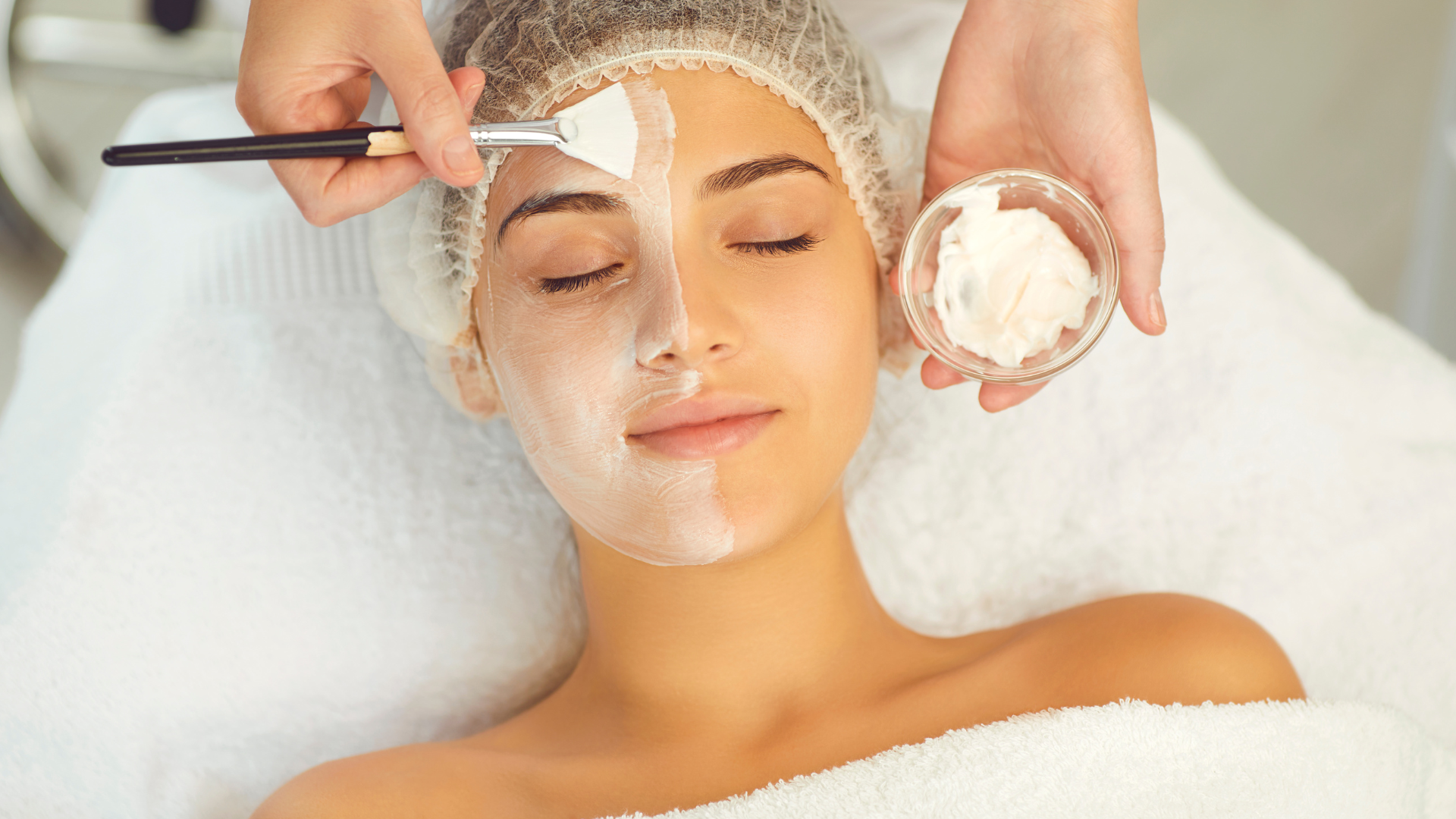Table of Contents
- Introduction: The Importance of Skincare
- What is a Basic Skincare Routine?
- The Benefits of Following a Daily Routine
- Essential Steps for a Skincare Routine
- Cleansing: The First Step to Healthy Skin
- Toning: Balance and Preparation
- Hydration: Daily Nutrition
- Sun Protection: A Must for Healthy Skin
- Exfoliation and Additional Treatments
- How to Adjust Your Routine Based on Your Skin Type
- Dry Skin: Intensive Hydration and Constant Protection
- Oily Skin: Sebum Control without Compromising Hydration
- Combination Skin: A Customized Balance for Different Areas
- Sensitive Skin: Gentleness and Priority Protection
- Common Skincare Mistakes and How to Avoid Them
- Recommended Products and Treatments
- Transdermal Solutions
- Advanced Facial Treatments
- Tips for Maintaining Radiant Skin in the Long Term
- Conclusion
- Frequently Asked Questions
Introduction: The Importance of Skincare
The skin is the largest organ of the body and serves as a protective barrier against the environment. Taking care of it not only contributes to a healthy appearance but also prevents issues such as premature aging, blemishes, acne, and loss of elasticity.
Through a basic skincare routine, you can establish a simple yet effective habit to keep your skin clean, hydrated, and protected. This approach not only improves skin texture and tone but also ensures that your face is prepared to handle time and external factors like pollution.
What is a Basic Skincare Routine?
A basic skincare routine consists of essential daily steps to maintain skin health. While some routines may seem complex, a basic one focuses on four fundamental pillars:
- Cleansing: Removes impurities and prepares your skin to absorb nutrients.
- Toning: Restores the pH balance and reinforces the hydration barrier.
- Hydration: Nourishes and protects the skin to prevent dryness.
- Sun Protection: Shields against sun damage, the primary cause of premature aging.
Incorporating additional treatments, such as transdermal solutions, can optimize the results of this basic routine.
The Benefits of Following a Daily Routine
A daily skincare routine offers numerous benefits, both aesthetic and functional:
- Prevents premature aging: Cleansing and sun protection are essential to avoid early wrinkles and dark spots.
- Improves texture and tone: Proper hydration and regular exfoliation result in smoother, more even skin.
- Reduces acne risk: By removing impurities and controlling oil production.
- Boosts confidence: Healthy, well-cared-for skin enhances self-esteem.
Essential Steps for a Skincare Routine
1. Cleansing: The First Step to Healthy Skin
Cleansing is the foundation of any routine. It removes dirt, makeup, and excess oil accumulated on the skin’s surface during the day.
Recommendations:
Use a facial cleanser suitable for your skin type:
- Foaming gel: For oily skin.
- Cream cleanser: For dry skin.
- Fragrance-free: For sensitive skin.
2. Toning: Balance and Preparation
A good toner not only balances your skin’s pH after cleansing but also minimizes the appearance of pores and prepares the skin for better absorption of moisturizers.
Key Ingredients:
- Salicylic acid: For oily or acne-prone skin.
- Rose water: For sensitive or redness-prone skin.
3. Hydration: Daily Nutrition
Hydration is vital for all skin types, even oily ones. This step ensures your skin remains elastic and protected against external elements.
Recommended Options:
- Light: Gel-based moisturizers for warm climates.
- Rich: Creams with ceramides for dry skin and cold climates.
4. Sun Protection: A Must for Healthy Skin
Sun damage is one of the main causes of premature aging and skin cancer. A sunscreen with at least SPF 30 is indispensable every morning.
5. Exfoliation and Additional Treatments
Although not a daily step, exfoliating once or twice a week removes dead skin cells, allowing your skin to breathe and absorb products more effectively.
Frequency:
- Once a week for sensitive skin.
- Up to twice a week for oily skin.
For advanced results, consider treatments like hydrating masks or rejuvenating therapies.
How to Adjust Your Routine Based on Your Skin Type
Each skin type has unique needs, and tailoring your routine to these characteristics is crucial for optimal results.
Dry Skin: Intensive Hydration and Constant Protection
Dry skin often feels tight, rough, and prone to flaking. It requires deep hydration and protection to strengthen its barrier.
Key Recommendations:
- Use creamy cleansers that don’t strip natural oils.
- Prioritize moisturizers rich in emollients and ceramides.
- Incorporate facial oils, such as argan or marula oil, for extra nighttime nourishment.
- Avoid harsh exfoliants; opt for gentle chemical exfoliants like lactic acid once a week.
Oily Skin: Sebum Control without Compromising Hydration
Oily skin often exhibits excess shine, enlarged pores, and acne. However, proper hydration is essential to prevent increased oil production.
Key Recommendations:
- Use gel or foam cleansers with ingredients like salicylic acid or niacinamide.
- Incorporate toners with witch hazel or glycolic acid.
- Opt for lightweight, oil-free gel moisturizers.
- Clay masks once or twice a week help absorb excess oil.
Combination Skin: A Customized Balance for Different Areas
Combination skin has oily areas (usually the T-zone) and dry areas (like cheeks). It requires a dual approach for balance.
Key Recommendations:
- Use mild cleansers that are neither too astringent nor too rich.
- Apply products tailored to specific areas:
- Lightweight moisturizers on the T-zone.
- Rich creams or oils on dry areas.
- Toners with niacinamide can be useful for balancing oily areas and avoiding irritation in dry areas.
- Multimasking masks (different types of masks on different areas of the face) are excellent for addressing both needs at the same time.
Sensitive Skin: Gentleness and Priority Protection
Sensitive skin reacts easily to products with fragrances, alcohol, or harsh ingredients, causing redness, burning, or itching.
Key Recommendations:
- Use hypoallergenic, fragrance-free cleansers with minimalist formulas.
- Choose products with soothing ingredients such as aloe vera, chamomile or colloidal oatmeal.
- Limit routine steps to avoid product overload.
- Avoid physical exfoliants and opt for very gentle chemical exfoliants, such as PHA (polyhydroxy acids).
- Always apply a mineral sunscreen (zinc oxide or titanium dioxide) to avoid reactions to chemical filters.
Common Skincare Mistakes and How to Avoid Them
Even with a good routine, some common mistakes can prevent you from achieving the desired results. Here are the most frequent ones and how to avoid them:
- Using the wrong products for your skin type: Choosing products based on trends rather than your skin’s needs can worsen issues like dryness or acne.
- Skipping sunscreen: Neglecting sunscreen is one of the most harmful mistakes. UV rays are responsible for 80% of visible skin aging. Apply sunscreen with SPF 30 or higher daily, even indoors.
- Over-exfoliating: Excessive exfoliation can lead to irritation, sensitivity, and damage to your skin barrier. Limit exfoliation to once or twice a week, depending on your skin type.
- Inconsistency: Skipping steps or not sticking to a daily routine can delay results. Consistency is key to healthy skin.
- Applying products in the wrong order: Always apply lighter products (like serums) first and finish with heavier ones (like creams). This ensures proper absorption of active ingredients.
Recommended Products and Treatments
In addition to following a basic routine, consider incorporating advanced treatments to enhance results:
Transdermal Solutions
These innovative technologies deliver active ingredients directly into the deeper layers of the skin, enhancing their effectiveness. They can help with hydration, rejuvenation, and improved skin elasticity.
Advanced Facial Treatments
For more visible results, consider treatments like chemical peels, microdermabrasion, or facial rejuvenation therapies. However, always consult a professional to choose the right treatment for your skin.
Tips for Maintaining Radiant Skin in the Long Term
- Consistent hydration: Keep your skin hydrated from the inside by drinking at least 8 glasses of water daily.
- Healthy diet: Foods rich in antioxidants, such as berries, spinach, and nuts, combat free radicals.
- Stress management: Stress can trigger issues like acne and redness. Take time for relaxing activities like yoga, meditation, or outdoor walks.
- Quality sleep: During sleep, your skin regenerates. Aim for 7-8 hours of restful sleep per night for a fresh, radiant look.
- Regular professional check-ups: Visit a dermatologist or skincare specialist regularly to assess your routine and address specific concerns.
Conclusion
Skincare is not just about aesthetics but a commitment to your overall health and well-being. A basic skincare routine allows you to protect this vital organ from environmental aggressors, maintain its elasticity, prevent issues like premature aging, and promote a fresher, more luminous appearance. The key to sustainable results lies in consistency. By dedicating a few minutes each day to cleansing, toning, hydrating, and protecting your skin, you can avoid long-term problems and enhance your natural beauty. Additionally, personalizing products to suit your skin type and incorporating advanced treatments like transdermal solutions can make a significant difference. Your skin reflects your health, and when you take care of it, you feel more confident and empowered. Start today and make skincare a lifelong habit.
Frequently Asked Questions
- Is it necessary to wear sunscreen indoors or during winter? Yes, it is. UVA rays, which contribute to premature aging, can penetrate windows and are present even on cloudy days or in winter. Using daily sunscreen is essential for healthy skin and preventing dark spots and wrinkles.
- Can I skip steps in my routine if I’m in a hurry? Ideally, complete all steps in your routine. However, if you’re short on time, at least cleanse your skin and apply sunscreen in the morning, and cleanse and moisturize at night.
- What should I do if I have sensitive skin that reacts poorly to many products? If you have sensitive skin, opt for hypoallergenic, fragrance-free products. Introduce one new product at a time, and always patch-test on a small area before applying it to your entire face.
- How long does it take to see results from a skincare routine? Visible results vary depending on your skin type and the products used. Initial benefits like improved hydration and a more even tone can appear within 1-2 weeks, while deeper changes may take 4-8 weeks.
- How do I know if I’m using the right products for my skin type? Monitor your skin’s response: if it feels more hydrated, smooth, and balanced, that’s a good sign. If you experience redness, irritation, or dryness, consider switching to gentler or more suitable products for your skin type. You can also consult a professional to determine your skin type and the most beneficial ingredients for you.


